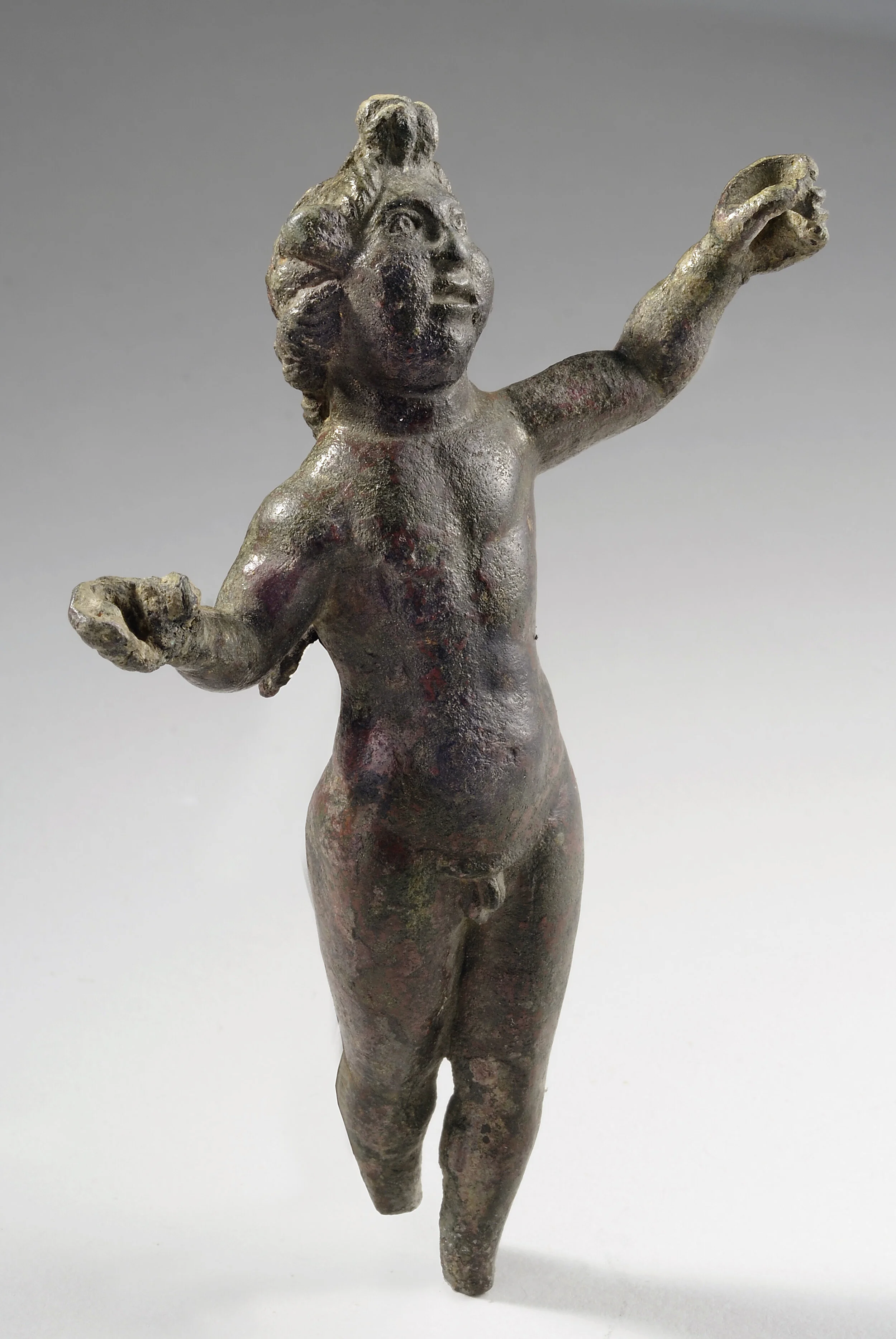Ancient Graeco-Roman Bronze Hunchback


Ancient Graeco-Roman Bronze Hunchback
Graeco-Roman, 1st century BC - 2nd century AD
Bronze
H: 7.1 cm
Serial: 3441
Provenance : Ex-Hatch-Conrad Collection, Rhineland, Germany, collected in the early 1970’s.
Published: Exotics of the Classical World, Phoenix Ancient Art, Geneva-New York, 2007, no. 4
The posture of this statuette is remarkable and not often seen: the body seen in a three-quarter view, the face represented in profile and the shoulders sharply angled.
The man, who is of thin build, appears to be older: he walks with a perceptible limp to the right. His arched back presents an unusual growth right on the left shoulder blade, clearly visible beneath the fabric of his clothes; the thin, slightly bent legs take a large, unsteady step forward (he is perhaps in the middle of dancing). He is dressed in a short chiton, tied about the waist with a belt, which forms a thick horizontal fold. The right arm, nearly entirely uncovered, is extended and bent: in the right hand, the man may have held a stick to help him walk; the left arm is wrapped in fabric. Sadly, the condition of the surface of the metal does not allow us to determine if the figure was bald (except for a curl standing up on top of the head) or if the head was covered by a pointed cap, accentuating the elongated shape of the head. His face resembles those of grotesques, even if the features are less exaggerated than usual, notably the absence of wrinkles on the cheeks and on the forehead. The frontal view of the face is very narrow.
Neugebauer has published some very precise parallels for this piece (originating in Egypt): he interprets them as images of a clown who entertains at a banquet for the amusement of the guests. He bases his hypothesis on a text by Lucien (Symposion XVIII).
Whether one interprets the figure as physically handicapped or as a dancing clown, this statuette is nevertheless a very attractive example of Hellenistic realism being applied to the minor arts: in spite of the less than "noble" subject and a certain wearing of the surface, this is still evidently a piece of remarkable quality.
Bibliography
NEUGEBAUER K. A., Die griechischen Bronzen der klassischen Zeit und des Hellenismus, Berlin, 1951, pp. 89-91, pl. 40, n. 73-74.
On realism in the Hellenistic minor arts, see : HIMMEL- MANN N., Alexandria und der Realismus in der greichis- chen Kunst, Tübingen, 1983.







